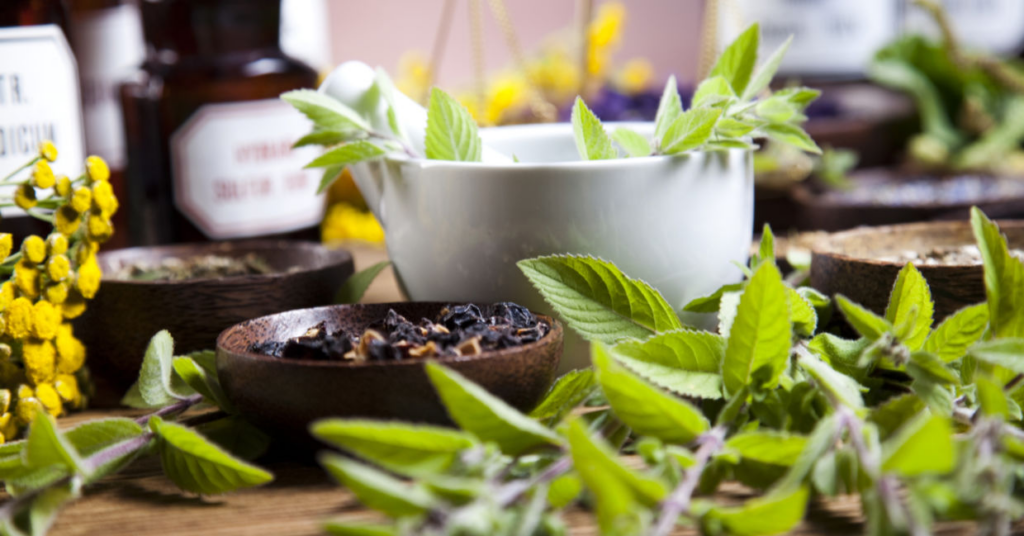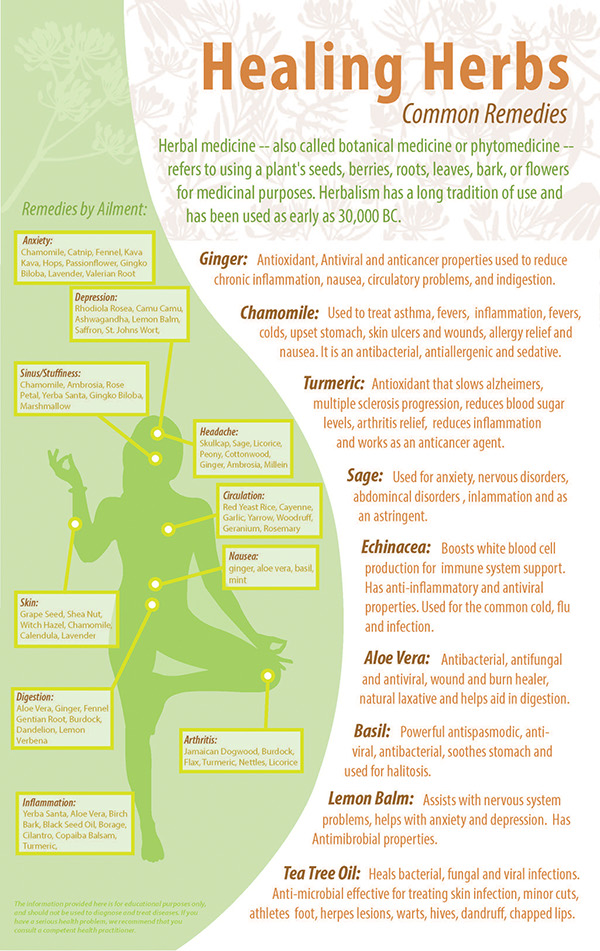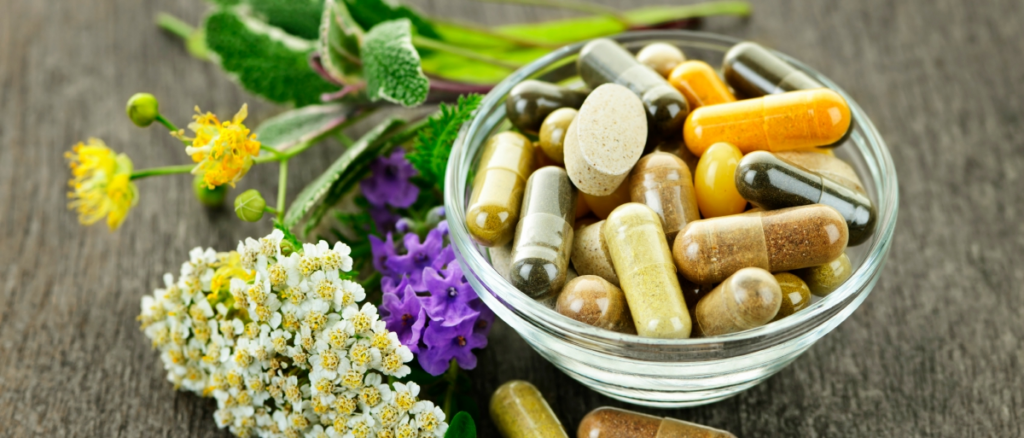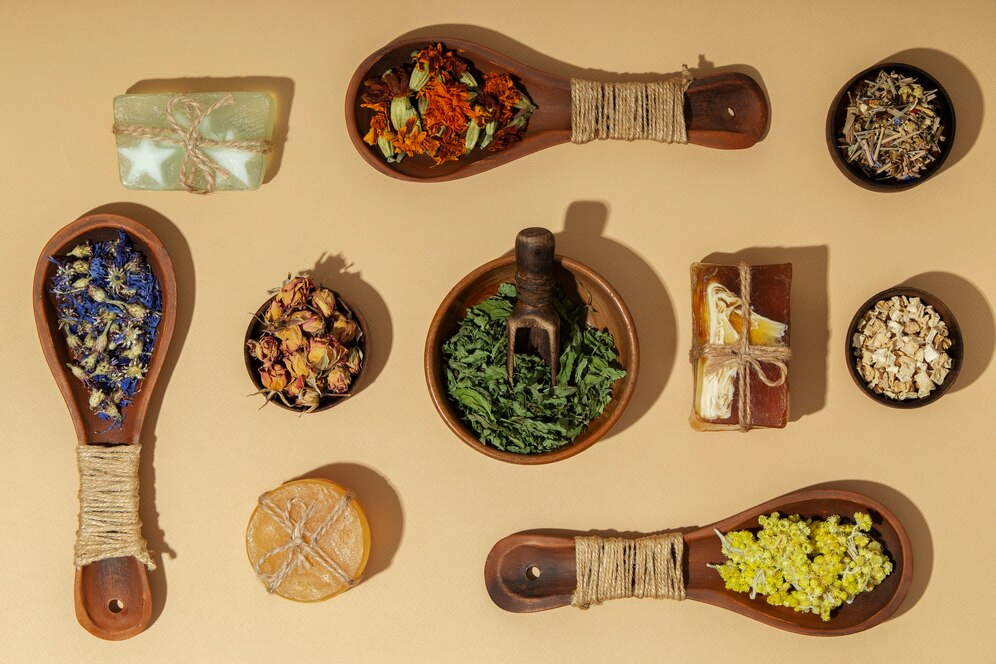Herbal Medicine
Herbal medicine is a treatment method that uses plants’ healing properties by concentrating them into different forms in order to heal various diseases or improve general well being. It is among the oldest known systems of care.

Have you ever attempted to take a cup of soothing chamomile tea while sick, or put a little bit of lavender oil on your temples for a headache? Using plants for medicinal purposes is an ancient practice that has been in existence for thousands of years.
The Bible, one of the cornerstones of Western civilization, also contains some interesting insights into this tradition. So let us now enter into the enchanting realm of herbology and consider what it says about them from its pages.
How are herbs referenced in the Bible?
The Bible references herbs as valuable for food and medicine, highlighting their role in creation and sustenance. They are often associated with healing, nourishment, and spiritual significance, reflecting the belief in their God-given properties for human benefit.
Herbs in the Bible refer mainly to parts of God’s creation to be used by man. The very first mention is found in Genesis 1:29, where God speaks of plants and herbs given for food to man. In view of their use, they are also seen as needing nourishment. Herbs such as hyssop and frankincense are used for purification and worship.
Thus, we find a dual role of herbs in the Bible, not only in healing the sick or injured body but also in spiritual rituals. Man views health and well-being as an integral aspect of satisfying the body, mind, and spirit.
What specific herbs are mentioned in the Bible?
Specific herbs mentioned in the Bible include hyssop, frankincense, myrrh, and mint. These herbs are noted for their uses in healing, anointing, purification, and offerings, reflecting their cultural and spiritual significance in biblical times.
Hyssop is cited for purification rituals; frankincense and myrrh were gifts to Jesus, raying healing and divinity. Mint was spoken of with regard to tithing, pointing out its value. Hence, herbs held a triple order in medicinal, culinary, and spiritual roles, quite inseparable from daily life and worship. Their mention in these contexts brings their place forth in ancient practices and symbolizes spiritual purity and divine connection.

How were herbs used for healing in biblical times?
Herbs in biblical times were used for healing wounds, treating ailments, and maintaining health. They were often combined in remedies and salves, demonstrating the knowledge of their medicinal properties and importance in traditional healing practices.
Herbal medicine was part of ancient medicine, for instance, aloe for skin healing and the balm of Gilead to assuage wounds. Herbal teas and poultices treated sickness in many instances, therefore indicating the health base founded on natural resources.
The practice is reflected through the Bible healing stories involving treatment using figs for boils. These references show the role of herbs in maintaining physical health and their dependence upon the bounty of nature for health.
What role did herbs play in biblical rituals?
Herbs plays a significant role in biblical rituals, used in offerings, anointing oils, and purification processes. They symbolized spiritual cleansing, sanctity, and divine connection, integral to worship and religious ceremonies.
Herbs, such as frankincense and myrrh, are mentioned in the Bible as forming a part of rituals and offerings and symbolizing prayer and holiness. Anointing oils were prepared with herbs to consecrate priests and sacred objects. Hyssop was used in purification rites, symbolizing cleansing and renewal.
All these practices only testify to the symbolic and spiritual uses of herbs, indicating faith in their power to link the material and divine worlds. Their use in rituals only strengthened the role of herbs within the sphere of spiritual life and granted extra sacredness to religious ceremonies.
How does the Bible view the relationship between herbs and health?
The Bible views herbs as God-given resources for health and healing, emphasizing their natural benefits. They are seen as part of creation’s provision for human well-being, aligning physical and spiritual health through divine wisdom.
The biblical view perceives herbs as very important to health, provided by God to sustain human life. Verses such as Ezekiel 47:12 seem to allude to their healing properties and show they are both a means of nourishment and medicine.
This perspective encourages a holistic life in health, with a proper balance between nourishment for the physical person and nourishment for spiritual growth. The Bible encourages stewardship of creation through identification with herbs in their natural benefits, hence using these gifts of nature in the sustenance of well-being.

Are there biblical guidelines for using herbs?
The Bible provides implicit guidelines for using herbs, emphasizing their role in healing and sustenance. It encourages mindful use, reflecting gratitude and respect for nature’s provisions, aligning with spiritual and physical well-being.
Although the Bible does not state it explicitly, responsible stewardship and gratitude in the usage of herbs are offered. It suggests they should be used for healing purposes and as nourishment based on the verses relating to their medicinal and dietary functions.
Such a model presents respect toward creation, encouraging careful use and reverence for natural resources. On this basis, the Bible prescribes the proper use of herbs concurred with spiritual beliefs by prescribing a balanced lifestyle that integrates faith into everyday practices.
How do biblical herb references influence modern herbal practices?
Biblical herb references influence modern herbal practices by highlighting traditional uses and spiritual significance. They inspire a holistic approach to health, integrating natural remedies with spiritual beliefs for comprehensive well-being.
It is upon these biblical references that modern herbal practices base their study and research for insight into the historical and cultural uses of herbs. These references provide a foundation for looking into traditional remedies and their spiritual symbolism, which inspires a holistic view of health.
Such incorporation of natural and spiritual approaches cultivates practices that answer to physical, emotional, and spiritual needs. Modern herbalists, by valuing ancient wisdom, adopt practices respectful of tradition but advancing natural health.
Wrapping Up!
The Bible recognizes the historicity behind the utilization of herbs as healing agents thereby indicating long practice in herbal medicine. It does not give specific medical instructions but implies that plants can be used to foster good health. Today, the best way to promote well-being might involve combining professional advice with alternative therapies such as acupuncture or even reiki sessions!
Whether taken through faith alone or coupled with practical steps like drinking herbal tea our journey towards recovery should always remain grounded in nature because that is what the bible teaches us about healing through herbs.
References
Herbal Medicine
Herbal medicine is a treatment method that uses plants’ healing properties by concentrating them into different forms in order to heal various diseases or improve general well being. It is among the oldest known systems of care.

Herbal drugs have become popular lately as a “natural” alternative to conventional medicine. However, even though many people view these remedies as being safe per se, sometimes they might pose major threats.
Are Herbal Drugs Truly Secure?
Herbal drugs are not always secure; their safety varies. They can interact with medications and cause side effects. Quality and regulation also differ significantly.
Many customers believe that herbal medicines are extracted from plants and, therefore, harmless without causing any side effects. Furthermore, such products are often advertised as “all-natural” or ‘chemical-free.’ However, this assumption is deeply flawed.
Plants contain many chemicals which could powerfully affect the human body. That something is natural doesn’t mean it’s safe. In fact, some of the deadliest poisons known to humans like strychnine and cyanide come from nature as well.
Are There Regulatory Gaps?
Yes, there are regulatory gaps in herbal medicine. Standards for quality, safety, and efficacy can be inconsistent, and oversight varies widely between regions and products.
Unlike modern pharmaceuticals, there are no strict testing procedures through which herbal drugs have to pass before approval. In countries such as the United States dietary supplements are classified as herbal products rather than drugs.
Because of this status, clinical trials are not required for them to be licensed before going to market.
Without proper oversight, harmful substances can be sold freely in an unregulated environment where innocent consumers may purchase them unknowingly.
It is impossible to determine all possible side effects associated with interactions between herbs and other prescription medications in the absence of lab testing.
Is There Incoherence In Quality and Strength?
Inconsistency of quality and strength is one of the most significant risks associated with herbal drugs. When compared to pharmaceuticals, which must follow strict manufacturing protocols; these herbals can significantly differ in their composition and efficacy.
Fertility, climate, and harvesting practices affect the potencies of plant active compounds. Different extraction and processing techniques usually lead to variations in the amounts of active ingredients present.
Some unscrupulous manufacturers often include undisclosed substances in their products to enhance their presumed efficiency.
This variation implies that customers can never be certain about the exact dosage they are taking, leading to underdosing (rendering the product ineffective) or overdosing (which potentially poses a danger).
Are There Risks Of Interactions with Conventional Medications?

Yes, herbal medicines can interact with conventional medications, potentially altering their effects or causing adverse reactions. It’s important to consult healthcare providers before combining them.
Many people who take herbal drugs do so while under conventional medication without informing health care providers. This practice has the potential for dangerous drug interactions because there are many herbs that affect how human bodies metabolize prescription drugs.
An instance would be St.John’s Wort, which is commonly used for depression treatment but has been found to have interactions with various medications such as contraceptives, anticoagulants, or HIV/AIDS treatment medication.
Another problem lies in the fact that most healthcare providers have little knowledge about herbal medicine hence they may not even know if any interactions could exist.
What Are The Researching and Educating Challenges in Herbal Medicine?
Researching and educating about herbal medicine face challenges like inconsistent quality, limited rigorous studies, variability in plant sources, and lack of standardization and regulation.
Researchers and educators face significant hurdles in dealing with the complicated nature of herbal medicines. Some herbal products comprise multiple active compounds that may interact in ways that are hard to study or predict.
Furthermore, product composition varies, making it difficult to conduct reliable clinical trials.
Due to that reason, medical practitioners find it difficult to offer professional guidance on how to best utilize herbs. So people fail to make wise decisions when it comes to herbal medicines due to lack of scientific backing.
What herbs are hard on the liver?
Herbs like kava, comfrey, and ephedra can be hard on the liver, potentially causing liver damage or interacting negatively with liver function.
Kava, comfrey, chaparral and pennyroyal are examples of herbs that can be tough on one’s liver. These may cause hepatotoxicity, hepatic injury, and in some extreme cases, hepatic failure. It is imperative to use them with care under professional supervision to prevent possible liver problems.
What herbs are bad for you?
Herbs like comfrey, kava, ephedra, and chaparral can be harmful, potentially causing liver damage, adverse effects, or interactions with medications. Consult a healthcare provider for safety.
Some herbs can be dangerous, especially when taken in high quantities or used for a long time. Among these include aconite, ephedra, and belladonna, which have the potential to cause severe toxicity and heart problems, among other health issues. Before using any potent herb, always seek advice from medical professionals.
What herbs can cause anxiety
Herbs that can potentially cause or exacerbate anxiety are ginseng, ephedra, and high doses of green tea, due to their stimulating effects or interactions with the nervous system.
Herbs, including ginseng guarana and ephedra, may make it more difficult for individuals who have anxiety disorders. They contain stimulants causing an increased heart rate and a sense of restlessness leading to heightened anxiety, particularly in those with sensitive constitutions or preexisting nervous tension.
What is the best drink to flush your liver?

Water is the best drink to flush your liver, as it helps maintain hydration and supports liver function. Herbal teas like dandelion may also assist.
Drinking water with lemon is recommended as a good drink for cleansing the liver. This helps detoxify it, aids digestion and also enhances its operation. Maintaining adequate supplies of plain water also helps the liver work properly by encouraging natural detoxification by urination.
What drug is most toxic to the liver?
Acetaminophen (paracetamol) is highly toxic to the liver, especially in high doses or with chronic use, leading to severe liver damage or failure.
Acetaminophen (Tylenol) ranks top as far as herbs toxic to livers are concerned. Overdose or continued use can result in acute liver damage or even failure. Thus, it must be administered according to prescription instructions without alcohol intake or other substances that would put strain.
What are three of the worst things for your liver?
Excessive alcohol, high doses of acetaminophen, and chronic hepatitis infection are among the worst things for your liver, causing significant damage and dysfunction.
Alcohol in excess causes fatty liver, hepatitis, and cirrhosis. High-fat diets contribute to non-alcoholic fatty liver disease (NAFLD).
Some medications, such as acetaminophen and some antibiotics, can lead to hepatic injury due to improper usage over extended periods.
Conclusion
Despite the potential benefits associated with herbal drugs, the biggest problem with these products is the lack of regulation and standardization. Consumers exposed to this gap in regulation stand the risk of experiencing potency variations from one batch to another or even hazardous adulterations.
Herbal remedies should therefore be approached cautiously, while healthcare providers should always be contacted on how there can be stricter supervision within this industry.
References
Herbal Medicine
Herbal medicine is a treatment method that uses plants’ healing properties by concentrating them into different forms in order to heal various diseases or improve general well being. It is among the oldest known systems of care.

The expression “mother of all herbs” is captivating, insinuating a super-plant with unparalleled benefits. While no single herb can claim this reputation universally, different cultures have venerated a few plants for their incredible qualities. Unraveling these candidates reveals an intriguing tapestry of centuries-old herbal knowledge around the globe.
What is the "Mother of Herbs" plant known for?
The “Mother of Herbs” plant is renowned for its culinary and medicinal uses. Historically, it’s valued for its aromatic leaves, which are used in cooking and herbal remedies. It contains essential oils that provide health benefits, including digestive aid and anti-inflammatory properties, making it a versatile herb.
The oregano plant, commonly called the “Mother of Herbs.” is popularly known because of its number of culinary and medicinal usages. Highly valued in cooking, this herb uses its aromatic leaves for flavoring a number of full-flavored dishes, including sauces, soups, and marinades.
This plant is considered a medicinal herb, with its essential oils showing strong anti-inflammatory and digestive properties. It has actually been used since time immemorial to relieve respiratory problems and digestive upsets and even as an antiseptic. From these multifaceted uses, it’s quite easy to incorporate this basic herb into many kitchens and herbal medicine cabinets around the world.
How did the "Mother of Herbs" get its name?
The “Mother of Herbs” earned its name due to its nurturing properties and widespread use in traditional medicine. Its leaves have been used for centuries to treat various ailments, providing maternal-like comfort and healing. The name reflects its significance in herbal practices and natural medicine.
The “Mother of Herbs” received its name from its broad use in traditional medicine as a nurturing, healing plant. The very name evokes something of a motherly nature that tends and comforts, for it has been there since the dawn of time to treat whatever man could possibly suffer from.
Indeed, numerous cultures, from ancient Greece to traditional Chinese medicine, give the herb a widespread reputation as a natural panacea. Its soothing, therapeutic potential qualifies the plant as the “Mother of Herbs,” which also seems to accord with the nurturing vitalism of mothering.
What historical significance does the "Mother of Herbs" hold?
The “Mother of Herbs” holds historical significance as a staple in ancient medicinal practices. Cultures worldwide have used it for its therapeutic properties, treating ailments from digestive issues to respiratory problems. Its longstanding use in traditional medicine highlights its enduring importance in natural health remedies.
It is considered the “Mother of Herbs” and forms a portion of the roots of traditional medicine across many cultures. Evidence of its use can be traced as far back as ancient Greece and Rome for medicinal purposes in the treatment of various digestive and respiratory problems. The herb proved to have therapeutic value recognized worldwide, from Ayurveda prescriptions in India to Native American healing rituals.
Its presence there in almost perpetual times of natural health remedies only underlines its importance as a timeless healer. The fact that this herb has been in constant use for many centuries itself testifies to the fact that it is of immense value in maintaining health and fitness with totally natural methods.

How is the "Mother of Herbs" used in cooking?
The “Mother of Herbs” is used in cooking for its aromatic flavor, enhancing dishes like soups, stews, and salads. Its leaves are often added fresh or dried to impart a unique taste and fragrance. This herb enriches culinary creations, making it a staple in many traditional and modern recipes.
The “Mother of Herbs” is used much for its flavor and aroma. It enhances a host of dishes, which includes soups, stews, sauces, and salads, with its unique taste and fragrance. Leaves of the herb, either fresh or dried, are usually added to recipes to provide more interest to flavors.
This herb forms the basis of Mediterranean and Italian cuisines, with a prime place in pasta sauces and pizza. Its versatility and adaptability to different ingredients keep its presence alive in most dishes, from classic to modern.
What medicinal properties does the "Mother of Herbs" possess?
The “Mother of Herbs” possesses medicinal properties such as anti-inflammatory, digestive, and antimicrobial effects. Its essential oils help soothe digestive issues and reduce inflammation. Traditionally used to treat colds and infections, this herb remains a valuable natural remedy for promoting overall health and wellness.
Known as the “Mother of Herbs,” this herb has been claimed to have limitless medicinal value and forms part of many different healing traditions. Its essential oils consist of compounds that have anti-inflammatory, digestive, and antimicrobial effects. Such properties ease digestive discomfort, reduce inflammation, and fight infection.
Historically, it was used against colds, respiratory problems, and skin diseases. It finds a place in natural health practices as it promotes overall wellness and enhanced immune functions. Traditionally, its therapeutic benefits are being continuously acknowledged by conventional and modern medicine.

Where can the "Mother of Herbs" be found growing naturally?
The “Mother of Herbs” naturally grows in tropical and subtropical regions, thriving in warm, humid climates. It is commonly found in Southeast Asia, where it’s used in traditional medicine and cuisine. Its adaptability allows it to be cultivated in various environments, making it accessible globally.
“Mother of Herbs” grows naturally in the tropical and subtropical areas of the world, preferring a warm and humid climate. It is native to Southeast Asia, where it is used not only as a mainstay of traditional medicine but also as an integral part of local cuisine. Such adaptability of the herb makes it grow in almost every environment, whether in the garden or in a pot, thus making it accessible to all people around the globe.
Cultivation of the herb has been propagated all over the world due to its multiple utility and its increasing popularity. So, whether cultivated in a house backyard or for bigger purposes, this herb grows very easily and turns out to be very useful with its adaptability in different surroundings.
Conclusion:
In conclusion, we have looked at different contenders for the title ‘the mother of all herbs’ who offer unique benefits to each one. Wise usage of herbs should be done responsibly under guidance from health agents before adding them into your routine. What’s your favorite herb? Why do you like it? Let us know!
